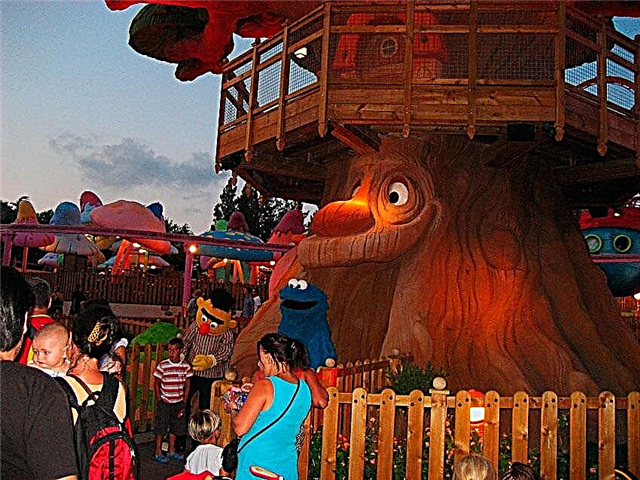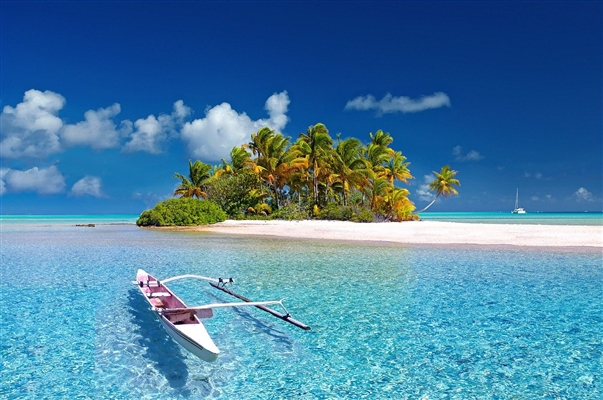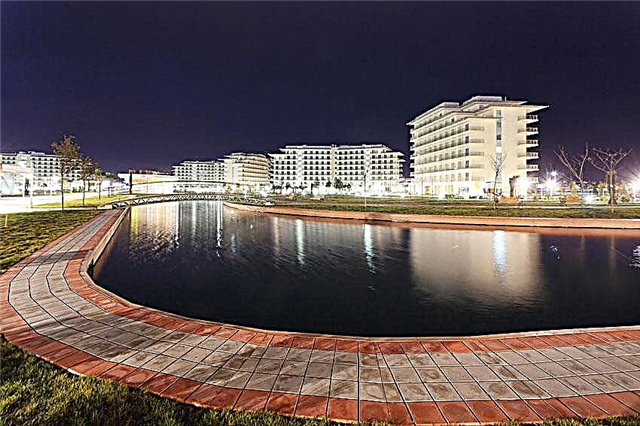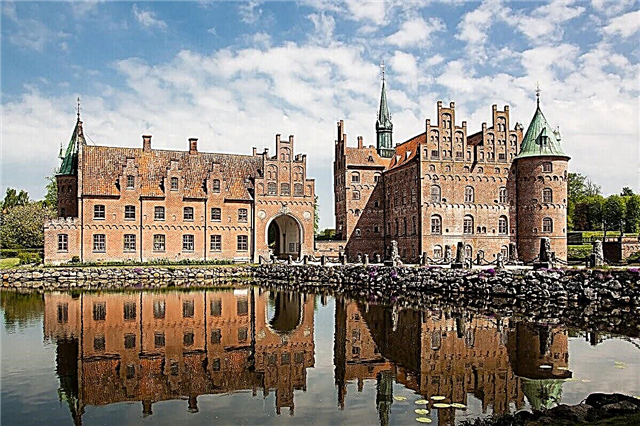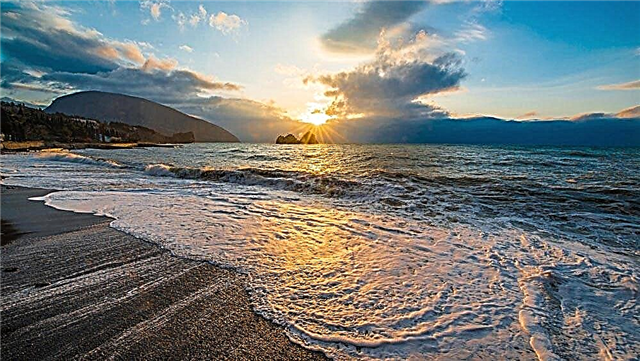The unusual history of the city is reflected in its sights, cultural and historical sites. The city, founded by the Swedes, from the beginning of the 18th century was part of the Russian Empire, from 1917 to 1940 it was part of Finland, then joined the USSR. In a small town, there are Swedish military fortifications, imperial majestic buildings in the classical style, Finnish practical buildings in the functionalist style and masterpieces of Art Nouveau, Soviet buildings.
The historic center of Vyborg, the Old Town, is especially interesting. Both centuries-old architectural monuments and modern stylish new buildings are concentrated here. In the narrow streets, you can still feel the atmosphere of the Middle Ages. You can appreciate the beauty of the city's location from one of the city's embankments. They offer a beautiful view of the Gulf of Finland.
The most interesting and beautiful places
List, photo with names and descriptions of popular sights of the city.
Vyborg castle
Located on the Castle Island. It was built by the Swedes in 1293. The main architectural element of the castle is the tower of St. Olaf. Knight tournaments, festivals and concerts are held on the territory of the castle. In the medieval premises of the castle there is a museum, the main exposition of which is "Swedish Vyborg". Collections of antique items are exhibited - weapons, furniture, coins, archival documents, engravings.

Mon Repos Park
Country county residence. Its territory includes a manor house of the 18th century, architectural monuments, rock monuments, a forest and islands. The park has alleys among picturesque landscapes and decorative compositions. An interesting place is the Grotto of Desires. There is a belief that if you make a wish inside the grotto, it will definitely come true. On the island of Ludwigstein there is a chapel, which is the necropolis of the Nicolai dynasty.
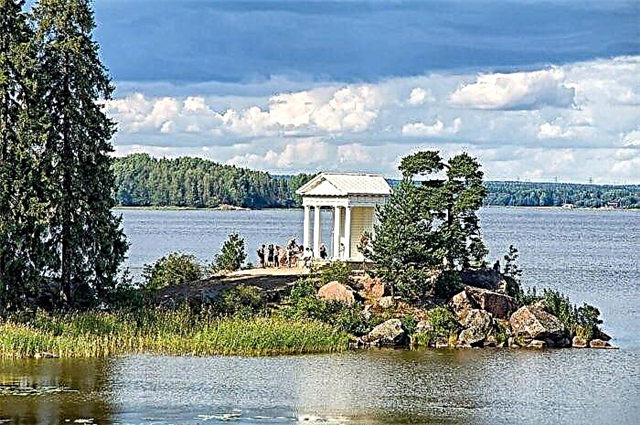
Old city
You can immerse yourself in the atmosphere of the Middle Ages in the historic center of the city. In the Old Town, buildings have survived within the fortress, erected in the 15th-16th centuries. The low-rise buildings are located in narrow cobblestone streets with unique architecture. The most atmospheric streets are Krasnoarmeyskaya and Krepostnaya. In the old houses there are antique shops, coffee shops, shops with fresh pastries.

Big bucket embankment
Until the 70s, the bay of Bolshoy Kovsh was called the bay of Salakka-Lahti, which is translated from Finnish as “bleak bay”. A beautiful view of the Vyborg Castle, a fountain, a boat station, as well as Viking ships from the filming of the film opens up from the embankment of the bay. On both sides, the embankment is surrounded by green squares, where several sculptures are installed. The most popular of them is "Boy with a Cat". It is made in the Baltic style.

Park named after Lenin (Park-Esplanade)
Among the townspeople it is considered the main city park. Formed on the site of the demolished ditches and embankments of the Horned Fortress. Later, the territory of the Cathedral and the territory with green spaces of Teatralnaya Square were added to it. The park was restored in 2009. They installed rides on the site of the stage, erected three fountains. The building of the Espilä restaurant, built in 1890, was restored.

Market Square
It is part of a single urban-planning cascade - Market Square, Teatralnaya Square, Cathedral Square. It was formed at the end of the 19th century on the site of the Horned Fortress, from which only the Round Tower remained. Banks, pharmacies, and market buildings have been preserved from the past centuries, which are closely adjacent to modern buildings. The main element of the Cathedral Square is the Transfiguration Cathedral of 1787; the Avenue of Actor's Glory runs near the Theater Square.

Round Tower
The unofficial name of the tower is “Fat Catherine”. The small tower is nevertheless one of the architectural symbols of the city. Its unusual silhouette and roof with flowing lines attracts many tourists and lovers of antiquity. It was built in the middle of the 16th century and was part of the defensive wall. Traces of old masonry are visible through the plaster layer. Now there is a restaurant in the tower.

Clock tower
Located in the Old Town. The tower was built in 1494 as the bell tower of the Vyborg Cathedral. Its walls are made of boulders and are more than 1.5 meters thick. Repeatedly the tower burned and collapsed. Its modern look appeared in the 18th century. Then a third tier was added to it, used as an observation deck. Since that time, the alarm bell, presented by Catherine II, has been preserved on it.

Town Hall Tower
The battle tower of the Vyborg fortress was built in 1490. After losing its defensive significance, it was used for a long time as a warehouse for weapons and armor. And in the 17th century it was used as the bell tower of the cathedral. During this time, the appearance of the tower changed several times, the wooden spire was destroyed during the Soviet-Finnish war. The restoration of the Town Hall tower was started in 2017 to accommodate the expositions of the Vyborg Museum.

Admiral Apraksin Embankment
The ennobled embankment of the Vyborg Bay is one of the favorite places for walking among residents and guests of the city. On a landscaped 900-meter coastline, there is a gym, observation decks, benches, a pedestrian promenade and a bike path. There is an equipped beach area on the Smolyany Cape. An unusual wooden figure of a moose is installed on one of the observation platforms.

Red Square
Previously it was called "Red Well Square" and a very bloody story from the 16th century is associated with this name. At the well, several citizens were executed, including the mayor and his son, who remained loyal to the deposed monarch Sigismund. At the beginning of the 20th century, the well was filled up as unnecessary, and bazaars began to be arranged on the square. Later, a statue of Lenin was erected in the center of the square, and the name was changed to "Red Square".

Exhibition Center "Hermitage-Vyborg" and Bastion Panzerlax
The bastion was built in the 16th century as part of the fortifications of the Horned Fortress. Over time, the bastion lost its military significance and gradually collapsed. In the 1930s, a neoclassical building designed by Ulberg was erected on its ruins. It housed the Museum of Fine Arts, and now houses the Hermitage-Vyborg. The museum complex hosts exhibitions dedicated to Italian painting, French decorative arts and others.

Historical military fortifications of Vyborg
The remains of defensive structures are of interest, as an example of ancient complexes, the purpose of which was to protect the city from attack.
East Vyborg fortifications
A complex of military fortifications of the 19th century. Their central part is located on Battery Mountain - the highest point of Vyborg. The redoubts are faced with granite; underground passages are laid between them. The army economy was armed with almost 200 guns. At present, the Vyborg Park of Culture and Rest is located on the territory of the fortifications. Both historical quarters and modern buildings surround Battery Mountain.
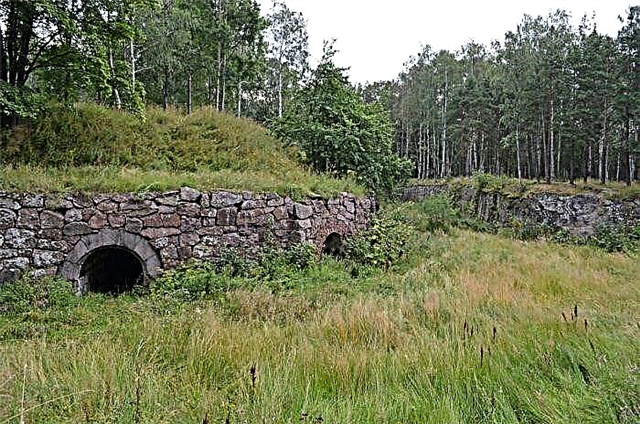
Annenskie fortifications
The fortress of the 18th century stretches from the Vyborg Bay to the Zashchitnaya Bay. The total length is 1 km. Made in the form of a crown with bastions in the corners, ditches and defensive ramparts were erected. Several monuments have been erected near the fortifications. The monument to Peter I is located on the Petrovskaya rock, at the Friedrichsgam gate there is a copy of the obelisk of the mass grave of Russian soldiers in 1910. Reconstructions of knightly tournaments are being carried out within the walls of the fortifications.

Medieval burgher houses
Four houses built in the XIV-XVII centuries have survived in Vyborg. Previously, these were fortress houses. Today these are the oldest residential buildings in Russia.
Burgher's estate
City building, presumably built in the 15th-17th centuries.It includes a manor and a coachman. Few examples of similar buildings in Vyborg have survived due to the redevelopment of the city in the 1640s. The inhabitants of the estate were representatives of the middle class - artisans or merchants. The building has a tower type and is made of boulders. In the 1970s, the tower was reconstructed and the medieval interior was restored.

House of the Merchant Guild of the Holy Spirit
Presumably built in the XIV century. It is a part of a merchant's estate - residential and outbuildings. The small house has a cubic shape, its thick walls are made of granite boulders. It is considered the oldest of all the surviving "burgher" houses in Vyborg. The house was restored in 1978. Currently, it houses a tourist information center.

Guild house
One of the four surviving houses from the 1640s. This one-storey building, like the rest of the "burgher" houses, is made of boulders. The guild house was built in the 16th century and served as a meeting place for the guilds of artisans in Vyborg. Since the 19th century, it housed private organizations, and a garage was added to the house. In the middle of the 20th century, the building was repaired and transferred to the department of the Vyborg Museum.

Citizen's House
The two-storey house with a basement is of a tower type and was supposedly built in the 16th century. Along with other "burgher" houses, it has the status of a medieval architectural monument. Houses of this type can be seen only in Vyborg. The citizen's house has small living quarters connected by a staircase. Over the years, its external and internal appearance has changed - the windows have been expanded, an extension has been added, and the heating system has been replaced.

Architectural landmarks of Vyborg
Monuments of architecture and urban planning in the city are the most notable sights of Vyborg. The ancient architecture is very interesting and attracts tourists.
Alvar Aalto Library
Built in the 1930s according to the design of the prominent Finnish architect Alvar Aalto. The architecture of this building combines features of strict functionalism, neoclassicism and simplified modernism. Natural materials were used in the construction; the unusual acoustic ceiling of the lecture hall is especially interesting. The lighting of the reading room is interesting, the light enters it through the windows on the ceiling.

Vyborg market
It was built in 1905 in the Northern Art Nouveau style and is the dominant feature of the architectural composition on the Market Square. In the building of the market, the clock tower with a hipped roof stands out. In Scandinavia, at the time of construction, the Vyborg market was one of the largest. The total length of the shopping arcade was 130 meters, the main gate was 20 meters wide. At present, trade is being carried out here and now.

Vekrut's house
The building of the former merchant house, built in the 17th century. Merchant Anton Borchardt erected a two-story building with a sharp top and rich interior decoration, which was considered the most luxurious in the city. Over the years, the house passed from hand to hand, even Catherine II lived in it. In the middle of the 19th century, features of classicism were added to it, and later neo-Gothic and neo-Renaissance. A complex pediment with turrets appeared.

Vyborg City Hall
Preserved building built in 1643. It was erected at the Round Gate and the Town Hall Tower, located nearby, belonged to it. In the premises of the Vyborg City Hall, meetings of burgomasters, city councils, and also collegiums were held: financial, commercial, judicial. There was a wine cellar in the basement. After the restoration, the town hall received a beautiful façade made of natural stone and facing bricks.

Bank of Finland building
The three-storey building, where the bank was previously located, is an architectural monument. It was built in 1910 by the architect Nystrem. The house is made of red brick in the northern Art Nouveau style with neo-Gothic elements. The main façade is decorated with pediments with many small details. During the renovation in 2010, the coat of arms of the Principality of Finland over the main entrance was replaced with the coat of arms of Vyborg.

Church of Hyacinth
Also known as Knight's House. A unique monument of architecture and history, built in the 16th century. The building was built of stone and has remained practically unchanged by now, despite its reconstruction. During the war in 1944, the facade of the church was badly damaged by bombing. In 1972, during the restoration, it was returned to its historical appearance. It houses museum exhibitions.

Vyborg guardhouse
It is located on the Old Town Hall Square in the historic part of the city. The guardhouse building was built in 1776. The author of the project of the classicism style was the architect Speckle. It was used as a guardhouse and for the imprisonment of townspeople and military officials. In 1857, the guardhouse was expanded, after which neo-Gothic elements appeared in its architecture. Now it is used as a travel agency, gift shop and cafe.

"Granite Palace"
One of the most famous architectural monuments in Vyborg. The granite palace was built in 1907-1908 in the style of national romanticism. It has arched windows and an original facade, which is faced with granite tiles and harmoniously combines with the nearby Vyborg Castle. The facade is decorated with stone carvings of animals and birds, as well as floral ornaments.

House of the merchant Moskvin
Residential building with administrative premises on the Red Square of Vyborg. It was built in 1907 and is an important architectural element in the general view of the area's development. The first floor is finished with granite and is intended for commercial organizations. The facade is made in the form of national romanticism. The main element of the decor is the twin turrets on the front facade, which makes the house look like a battle castle.

Dagerman's house
A neo-gothic masterpiece of architecture. Built in 1897 by the architect Waldemar Aspelin as a residential building. The elegant building impresses with its bright decoration. The house was not damaged during the war and has survived to this day practically in an unnamed form. In Soviet times, it housed an evening school and a teacher training college. Now within its walls is a branch of the University. Pushkin.
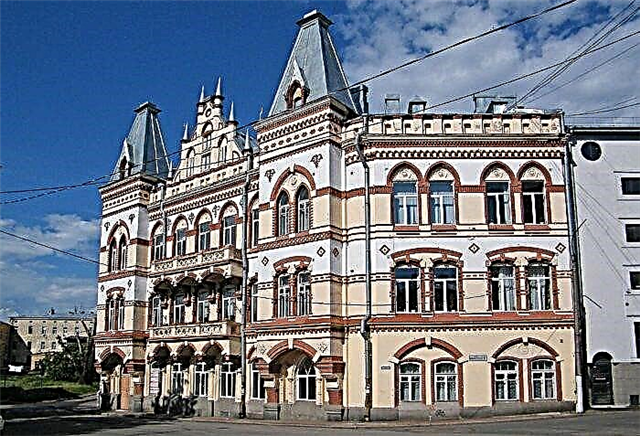
House of Lallucca
The original building was designed by Allan Shulman. The style of construction is national romanticism. Previously owned by Hyakli, Lallucca & Co. The house contained both commercial and residential premises. The building was badly damaged during the Soviet-Finnish war, but was restored. The house is clad in dark red granite. The façade is decorated with images of animals and humorous drawings.

Witch house
Also known as the "house of cards". A triangular building, the sharp corner of which is decorated with a pinnacle with a sharp top. The general style of construction is neo-Gothic with modern elements. The house was built at the end of the 19th century with the participation of the architect Eduard Dippel. The exterior of the building in the form of a fortress wall with towers reminds of the destroyed fortifications of the Stone Town. The house consists of two buildings, 3 and 4 floors.

House of the merchant Buttengoff
The former merchant house is now a residential building. Built by architect Johan Blomkvist in 1898. Stands on top of a hill, on Krepostnaya street. The house was built as a profitable one; on its first floor there were shops of the merchant Buttengoff, who decorated a rich facade to attract the attention of buyers. Elements such as semi-columns of different heights, weathercocks, high pilasters were used.

Rococo palace
The only building in Vyborg in the neo-rococo style. The two-storey mansion, built in 1883, is an architectural monument. The building was designed by the eclectic architect Frederic Odenval for the merchant Sergeev. The small house has an ornate facade. The house of the merchant Konkonen in the Northern Art Nouveau style adjoins Sergeev's mansion.The grotesque figures of the Atlanteans were used to decorate the facades of both houses.
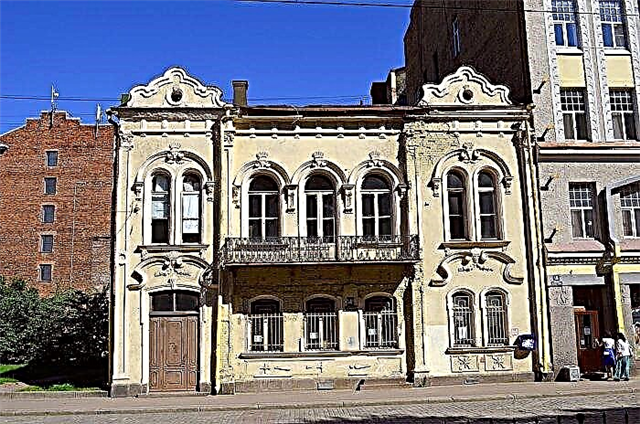
Building of the National Joint Stock Bank
Built in 1901 for the branch of the Nyström-Petrelius-Penttilä bank. The three-storey building combines the neo-Renaissance style with the national characteristics of Finnish romanticism. The building is interesting for its skillful stone carving and bas-reliefs. The coat of arms of the Principality of Finland, the wands of Mercury, as well as an ornament from the Karelian fauna and flora - pine branches with cones, ears, fish and thistles are depicted. The decoration used granite and potted stone.

Temples and cathedrals of Vyborg
Historical places of worship, the main religious sites of the city.
Transfiguration Cathedral
It is considered the main religious site in Vyborg. It is a unique monument of classic Italian architecture. Its construction began in 1787 and ended in 1892. All these years the cathedral has changed its appearance several times. For the bell tower, originally located in the Clock Tower, a separate building was built, which was later combined with the building of the cathedral. The interior is decorated with beautiful paintings.

Cathedral of Saints Peter and Paul
Lutheran temple, the only one preserved in Vyborg. The project of the temple was developed by the master of the classical style Yuri Felten. Its construction began in 1793. The facade and bell tower of the temple are decorated with columns, some details of the altar were covered with gold. During wartime, the temple suffered little from the bombing, but part of the interior inside was destroyed. In 1997, the church was presented with an organ tuned to the playing of liturgical music.

St. Elias Church
The Orthodox church was built on Mount Ilyinsky at the end of the 18th century on the basis of a hospital church. It consists of two aisles, a prayer hall and a three-tiered bell tower. Project architect - Johann Brockmann. During the war, the temple was badly damaged and was subsequently dismantled. Its restoration was started only in the 1990s. The consecration of the practically newly built church took place in 1999.

Monuments and monuments of Vyborg
Interesting monuments to famous people, historical and modern objects that adorn the streets and squares of the city.
Monument to Torgils Knutsson
The monument to the founder of the city was erected on the Old Town Hall Square on the initiative of local amateur historian Jacob Arenberg. The bronze sculpture was designed by Ville Wallgren. The sculpture stood for 40 years - from 1908 to 1948 and was dismantled. For decades it lay in one of the sheds of the improvement plant, later the monument was transferred to the Vyborg Museum. The monument was restored in its original place only in 1993.

Monument to Fyodor Apraksin
The monument to the statesman, commander and politician was erected on Petrovskaya Square in 2010 as part of a nationwide project. The aim of the project is to preserve the memory of the names of people who stood at the origins of the formation of the Russian state. Near the monument are the Vyborg Castle and the Fortress Bridge. The bronze bust of Count Apraksin has a height of 4.5 meters and is installed on a granite pedestal.
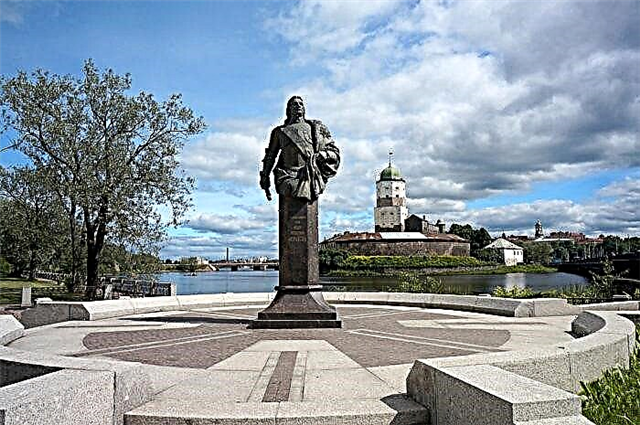
Viking Drakkars
Narrow Viking ships are located off the coast of Salakka-Lahti Bay. They are a popular tourist attraction and embellishment of the embankment. Their name translates as "dragon ship", the ships look impressive and impressive. Their nose is crowned with dragon figures carved from wood. Rooks appeared in Vyborg after the filming of the film "And trees grow on the stones." The boats were made by the Petrozavodsk Shipyard.

Monument to Peter I
The bronze statue is in Petrovsky Park. Installed in 1910 with the permission of Nicholas II. From the top of the rock, where the monument is located, you can clearly see the Vyborg Castle. The choice of location is not accidental, because the monument was erected to commemorate the 200th anniversary of the capture of Vyborg. The monument was dismantled several times and was simply thrown from the pedestal by Finnish troops. The statue was damaged. In 1954, the restored statue was returned to its historic site.

Monument-tank T-26 No. 101
Installed on the 62nd anniversary of the victory in the Great Patriotic War. The command tank took part in the Soviet-Finnish war in the 1930s. His remains were found in 2005 in the Gulf of Finland. In memory of the fallen soldiers, it was decided to install the tank as a monument on a granite pedestal. It was restored at the Vyborg shipyard. The monument is located in a landscaped park on Pobedy Avenue.

Monument to the Vyborg tram
Installed on the central square of the city - Teatralnaya. It symbolizes the memory of the tramway traffic in the city from 1912 to 1957. The tram was recreated on the basis of the car of the German-Swedish company ASEA / AEG - an exhibit of the Tram Museum. The monument was opened in 2018 at the site of a major tram accident in 1920, in which 5 people died. In addition to the carriage, the memorial composition includes sculptures of a carriage driver and a free-rider boy.

What else to see and where to go?
In addition to viewing the architectural beauties, there are also interesting places in the city that are worth visiting.
War Museum of the Karelian Isthmus
Private museum dedicated to the Soviet-Finnish wars of 1940-1941 and 1941-1944. Located in the territory of the Central Barracks. The founder of the museum is the historian Bair Irincheev, whose personal collection became the basis of museum expositions. The museum exhibits historical documents, photographs of the war years, samples of the uniforms of the Soviet and Finnish army, finds from the battlefield. Visitors are allowed to try on the uniform, and models of weapons can be picked up.

House-Museum of V.I.Lenin
The wooden building where the museum is located is a cultural heritage site. Lenin visited Vyborg several times during the preparation of the revolutions of 1905-1907, and in 1917 he hid in the city for two weeks from the persecution of the authorities. The house where Lenin lived while in Vyborg, and from where he led the Bolshevik movement, was made a museum in 1958. It has recreated a memorial setting and is equipped with documentary expositions.

Historical and Cultural Center "Varyazhsky Dvor"
Located 16 km from the city. This is an old medieval princely estate, where an open-air museum was equipped. It recreates the atmosphere of the life and life of the Vikings. On the territory of the center, reconstructions of events are often carried out, which are based on the archaeological finds of Scandinavia and Ancient Rus. Sightseeing tours are organized for guests, you can change into historical clothes.



